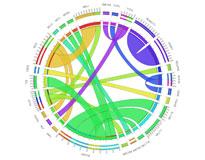Acute Myeloid Leukemia (AML) is a type of blood cancer. Even though patients get the same treatment, some get cured whereas others relapse. The reason is that AML is a biologically heterogeneous cancer. Some patients of AML have chromosomal abnormalities in their leukemic cells whereas others have mutations in genes or in some cases there is a combination of both. These genetic changes harbored by the leukemic cells are critical in influencing response to treatment and disease outcome. Here, we will study AML genome at the chromosomal and DNA sequence level so that we can identify patients who are most likely to respond to chemotherapy and distinguish them from patients who likely to relapse. For this purpose, we will utilize a combination of technologies such as karyotyping & fluorescence in-situ hybridization to study structural abnormalities in chromosomes and next generation sequencing to study mutations in genes.
Detection of leukemic cells left behind, after a course of treatment is called minimal residual disease (MRD). These leukemic cells will eventually repopulate the bone marrow and cause relapse. The presence of MRD suggests that relapse is imminent and offers a window for early treatment intervention. For AML, MRD is usually assessed by detecting abnormal expression of antigens on the leukemic cells. However, this technology suffers from low sensitivity and can usually detect only one leukemic cell in a background of 1000 normal cells. In some patients, after treatment, leukemic cells can change their abnormal antigenic profile and try to mimic normal cells. Furthermore, some patients just do not express antigens abnormally. These problems result in false negatives, at least, in a subset of patients. To overcome these hurdles, we will develop deep sequencing strategies to detect MRD and compare these results with immunophenotyping based MRD.
Through this research we hope that a contribution to personalized medicine can be made which will be used for management of patients with AML in the future.


